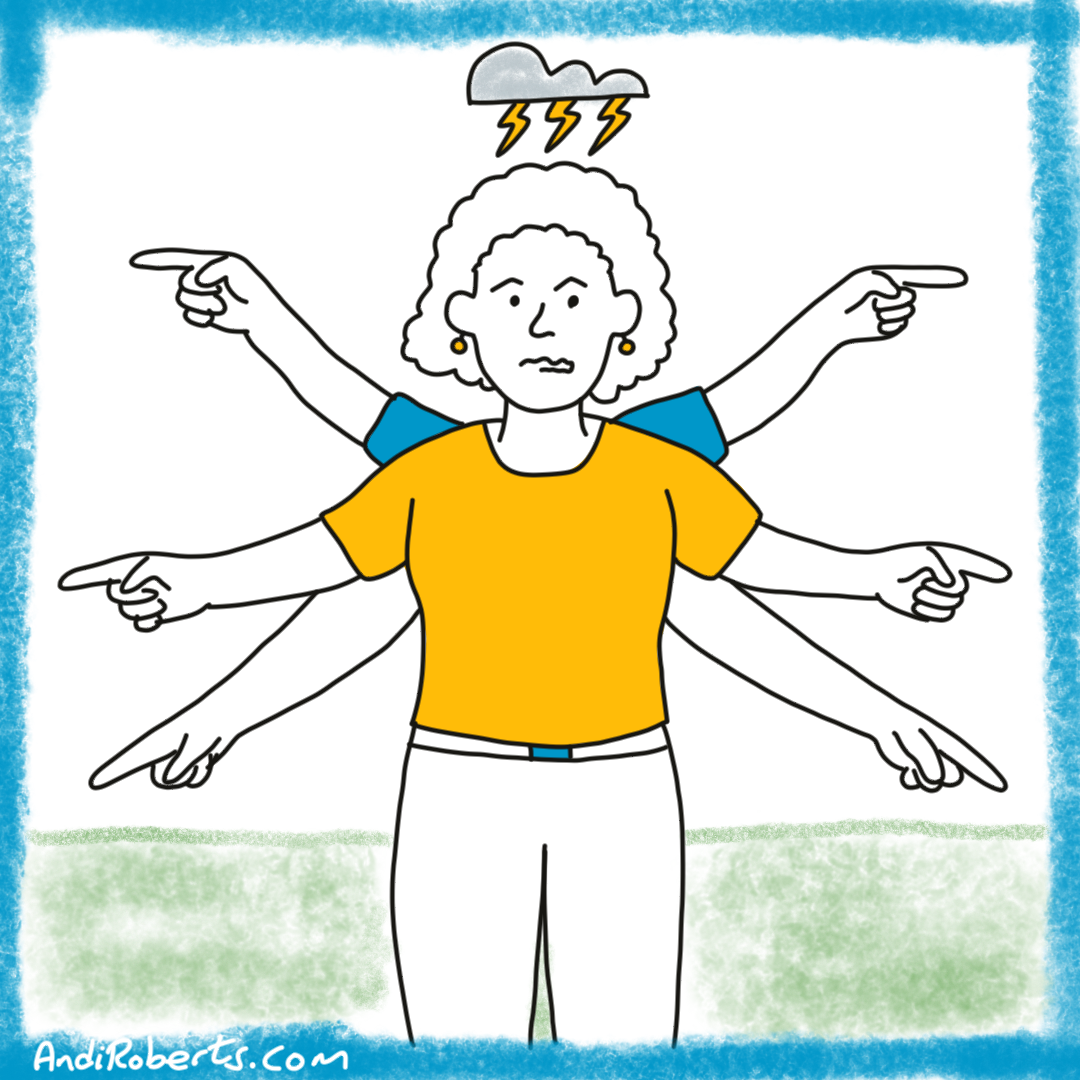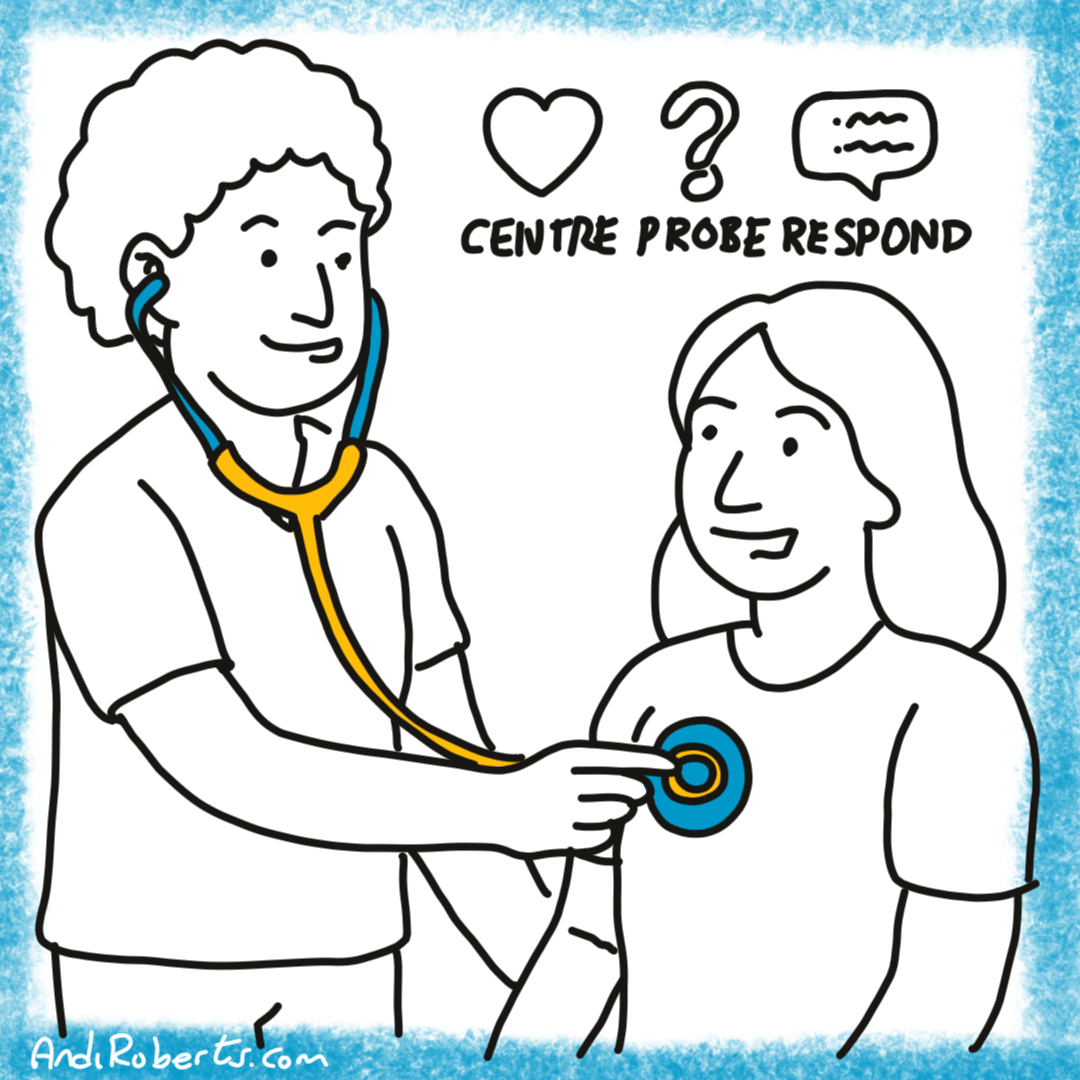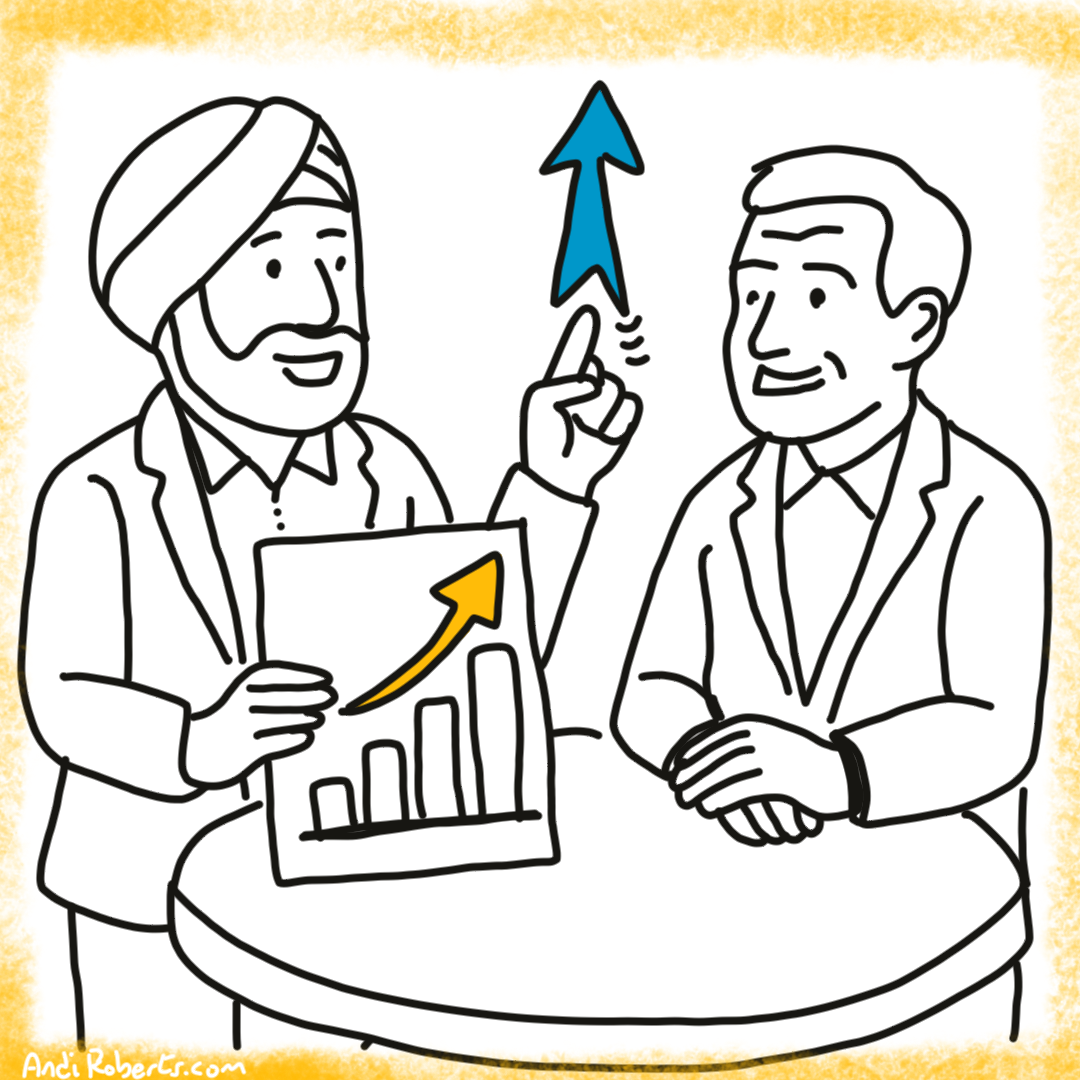Recently, I was co-delivering a change readiness webinar for a large European manufacturer. The company was in the middle of a major transformation: centralising back-office services such as finance, HR, and procurement into a single global function.
The business case was solid. Standardisation promised efficiency. Centralisation meant consistency and oversight. But numbers on a slide are not the same as lived experience. The challenge was how thousands of employees, spread across plants and offices, would respond when familiar processes and local control shifted to a distant global function.
Our webinar was one of a series designed to help leaders grapple with what the change would mean for them and their teams. It was more reflective and interactive than the large-scale “all hands” meetings that usually dominate change programmes. We knew that town halls would come later in the journey, and experience told us they would not make much of a difference.
After one of our sessions, my peer, who was co-delivering with me, voiced what many quietly suspect: “This broadcast style only goes so far. Leaders are showing up, but is this really shifting their engagement or ownership?”
That comment landed hard. It was not a critique of that one session, but of the format itself. Webinars and town halls are excellent at distributing information. What they rarely do is create genuine commitment. People leave knowing more, but not necessarily believing more, or feeling more able to act.
This is not a matter of poor leadership or bad intent. It is a matter of design. These formats collide with what behavioural science tells us about how people behave in groups, how they give voice to concerns, and how they build trust. Instead of fostering ownership, they inadvertently rehearse dependency.
So the question is worth asking: if these are our go-to tools for preparing people for change, why do they so often fall flat?
Part I. The behavioural dynamics that quietly drain the room
The dependency trap: why broadcast breeds passivity
Broadcast formats place leaders at the centre and participants in the role of audience. Slides dominate, content flows one way, and interaction is limited. The implicit contract is clear: authority speaks, others listen.
This pattern matters more than most leaders realise. When the format signals that authority and answers lie elsewhere, participants unconsciously shift into passivity. They may leave informed, but not with a greater sense of ownership.
Martin Seligman’s classic research on learned helplessness (1975) demonstrated that when people believe others control outcomes, their willingness to act diminishes, even when opportunities later arise. Large corporate gatherings can reproduce the same effect.
We saw this in the manufacturer’s webinars. Leaders were diligent in telling the story of change, but participants were not being asked to take any action with it. At best, they left with a clearer understanding. At worst, they felt the change was being done to them.
Possibilities for practice in physical rooms:
• Reconfigure the space into clusters of 4–6, not rows.
• Embed action rounds where groups identify one thing they can do within two weeks.
• Rotate hosting so different voices lead parts of the session.
• Capture commitments visibly on flipcharts around the room.
• Close with groups declaring actions to one another for peer accountability.
Possibilities for practice in virtual rooms:
• Use breakout groups with clear prompts for action.
• Capture outputs on collaborative whiteboards in real time.
• Randomly select one participant per group to share back.
• Ask every participant to type one action in chat before closing.
• Rotate facilitation across different participants.
Reflection: If you watched your own session on mute, what would the structure tell you about where responsibility sits?
The illusion of voice: why Q&A is not dialogue
Large webinars and town halls nearly always conclude with a Q&A session. Leaders view this as a sign of openness. Yet usually only a handful of confident voices take part.
Evaluation apprehension plays a role. Cottrell’s work on social facilitation (1972) demonstrated that people tend to suppress risky behaviours when under scrutiny. Asking a tough question in front of peers and executives feels risky.
Pluralistic ignorance compounds it. Prentice and Miller (1993) showed how individuals misjudge norms and assume their private doubts are unique. In a corporate setting, silence convinces people their scepticism is unusual. The result is a safe slice of questions while the most essential concerns remain unspoken.
Leaders leave thinking they have engaged openly. Participants leave feeling unheard.
Possibilities for practice in physical rooms:
• Begin with table discussions before any plenary Q&A.
• Collect one theme from each table and respond to those patterns.
• Use anonymous index cards to surface tougher questions.
• Invite participants to vote on themes they most want answered.
• Ask each table to nominate a questioner to ensure broader participation.
Possibilities for practice in virtual rooms:
• Use breakout groups for reflections before surfacing questions.
• Invite anonymous submissions via Slido or polling tools.
• Cluster questions live on-screen to show collective themes.
• Allow participants to vote on which themes to prioritise.
• Rotate which breakout groups have the floor for live questions.
Reflection: Where in your current format can someone voice doubt without risking their reputation?
The group effect: how size silences
Large groups generate reliable psychological effects.
• Diffusion of responsibility. Darley and Latané (1968) showed that as group size grows, the likelihood of an individual acting declines. In a webinar with hundreds of participants, everyone waits for someone else to ask the hard question.
• Conformity pressures. Asch (1956) demonstrated how people align with group norms, even when those norms contradict personal judgment. In corporate gatherings, the norm is politeness.
• Groupthink. Janis (1972) described how cohesive groups suppress dissent to preserve harmony. Large forums dominated by polished messaging create exactly these conditions.
Leaders often mistake silence for support. In reality, discomfort and doubt are merely suppressed.
Possibilities for practice in physical rooms:
• Collect concerns anonymously from all participants before open discussion.
• Use roving facilitators with microphones to draw out voices across the room.
• Include short trio conversations as pressure valves before plenary.
• Mix seating so senior managers and frontline staff sit together.
• Display all inputs and invite the room to prioritise.
Possibilities for practice in virtual rooms:
• Use instant polls to capture anonymous perspectives.
• Ask breakouts to list doubts and then cluster them centrally.
• Invite participants to use digital sticky notes on a shared board.
• Randomly select different reporters for each breakout.
• Run mid-session pulse checks on alignment.
Reflection: If you measured contribution instead of attendance, what story would your last session tell?
The neuroscience of scale: why trust shrinks
Human brains are not built for mass connection. Robin Dunbar (1992) proposed cognitive limits on social bonding, often expressed as “Dunbar’s number”: around 150 stable relationships, with intimacy possible only in smaller groups of 5–8.
Trust is also chemical. Paul Zak’s research (2012) shows that oxytocin is released during direct, reciprocal interaction. It underpins cooperation and bonding. Broadcast events do not generate it.
Alex Pentland’s work (2012) on “honest signals” reinforces this. High-performing teams exchange rapid, energetic, face-to-face signals of attention. These cues are absent in one-way webinars or dimly lit auditoriums dominated by slides.
In the manufacturer’s webinars, slides filled the screen. Cameras were off. Without visual or social cues, people were present in body but absent in engagement.
Possibilities for practice in physical rooms:
• Begin with paired conversations before content.
• Include short energisers or movement-based activities.
• Capture contributions visually on large walls.
• End with a ritual of gratitude, such as naming one gift received.
• Position leaders among participants rather than apart on a stage.
Possibilities for practice in virtual rooms:
• Use breakout pairs as the opening move.
• Encourage cameras on in small groups.
• Keep presentations short and intersperse dialogue.
• Use chat rituals such as one-word check-ins.
• Capture commitments visibly in shared documents.
Reflection: In your last gathering, how much of the time were people looking at people rather than at slides?
Conclusion to Part I
What these dynamics reveal is that the very structure of broadcast formats works against what leaders most need during change. Dependency, silence, and passivity are not caused by apathy. They are predictable human responses to environments that position people as spectators.
If the goal of change is ownership, then gatherings must be designed to make ownership unavoidable. That requires leaders to stop seeing themselves as performers of clarity and start acting as conveners of connection.
Part II. The community dynamics that bring the room alive
Moving from presentation to co-creation
If the first half of this discussion is about the limits of broadcast, the second is about what happens when we redesign gatherings as spaces of co-creation. The difference is more than technical. It is philosophical. In a presentation, knowledge and authority flow from the stage. In co-creation, meaning is produced by everyone present.
When employees are invited to interpret, question, and build on what they hear, they become co-authors of the change story. Ownership is not given by leaders but taken up by participants because they have been part of shaping it.
In practice, this requires courage. Co-creation is untidy. Leaders cannot predict exactly what participants will say, or whether scepticism will emerge. Yet it is precisely in that untidiness that trust forms. People do not want certainty as much as they want to know they matter.
Examples in a physical room:
• A senior executive speaks for 15 minutes to frame the change, then steps aside. Tables are given questions such as: What stands out? What concerns us? How might we respond as a team?
• Instead of a Q&A, facilitators collect responses from each table and map them on large wall charts.
• Participants walk the room, seeing the patterns emerge, and then engage in dialogue about what actions they will take together.
Examples in a virtual room:
• Leaders open with a three-minute framing statement. Breakouts are used immediately, with each group asked: What does this mean for our context?
• Shared digital whiteboards (Miro, MURAL, Jamboard) become the commons wall where every group’s reflections are posted.
• Leaders return not with “the answers” but with curiosity: “What do you see in this collection? What surprises you? Where do you want to go next?”
Reflection question: What would it take for you to step off the stage and invite others to co-create the meaning of change?
Building belonging before alignment
Many leaders equate alignment with agreement. But alignment built on compliance is fragile. It collapses the moment doubt surfaces. Genuine alignment is built on belonging. People commit not because they are told to, but because they feel part of a whole that matters to them.
Belonging is not soft. It is the social ground from which accountability grows. Social identity research shows that when people feel part of a group, they are more likely to act in line with collective goals (Tajfel & Turner, 1979). Yet organisations often invert the order: they seek alignment first, hoping belonging will follow.
The alternative is to invest time in creating belonging up front. This can be as simple as giving space for people to introduce themselves, to share what they bring, and to name what they are concerned about. These gestures do more than “warm up” the room. They signal that each voice matters, that people are not just bodies to be aligned but citizens of a community.
Examples in a physical room:
• Sessions open with small-group introductions: What are you bringing into this conversation today?
• Each table creates a short list of hopes and concerns, posted visibly around the room.
• Facilitators acknowledge these before any formal presentation begins, saying: “This is what matters to you. Let’s hold that as we go.”
Examples in a virtual room:
• Begin with paired breakouts where each person answers: What is one thing on your mind as you join today?
• Collect hopes and concerns via chat or polling before showing the first slide.
• Leaders refer back to these throughout the session, showing that participant voices frame the agenda, not just leader priorities.
Reflection question: How much time in your current gatherings is spent building belonging, and how much is spent trying to engineer alignment?
Conversations that matter
Real engagement happens in the conversations participants have with each other, not in the moments they listen to leaders. Broadcast formats sidestep this, allowing only short, surface-level exchanges. Yet it is the deeper conversations, the ones that surface doubt, possibility, and responsibility, that shift behaviour.
Generative questions are the entry point. Unlike information-seeking questions (“What will the new system do?”), generative questions invite reflection and responsibility (“What gifts do we bring to make this change succeed?”). They cannot be answered by leaders alone, because they require the whole community.
Designing for these conversations means rethinking structure. Instead of allocating 90% of time to presentation and 10% to discussion, reverse it. Provide a brief framing, then release people into conversations that matter.
Examples in a physical room:
• Triads reflect on: What possibilities do you see here? What concerns must we name?
• Each group posts one statement on a wall, and the room circulates to read.
• The final plenary is not Q&A but shared reflection: “What did we learn from one another?”
Examples in a virtual room:
• Breakout rounds of 10 minutes each, with different prompts: What excites you? What worries you? What is one thing you will do?
• Chat is used not just for questions but for commitments, harvested into themes by a facilitator.
• Leaders close by reflecting on what they heard, rather than returning to slide decks.
Reflection question: If your next gathering was designed around conversations rather than presentations, what might change?
Making commitments visible
Change collapses when responsibility remains abstract. It sticks when commitments are visible, specific, and shared. Behavioural science shows that public commitments increase accountability through social proof and reputational pressure (Cialdini, 2009).
Gatherings are perfect places to surface commitments. Not promises extracted by leaders, but declarations participants make to one another. These must be visible—not hidden in notebooks, but displayed on walls, whiteboards, or documents everyone can see.
Examples in a physical room:
• After discussions, each table writes one commitment on a poster and posts it around the room.
• Participants walk around, reading one another’s commitments.
• The session ends with: “This is what we, together, have committed to.”
Examples in a virtual room:
• Each breakout posts its commitment on a digital board.
• Participants use chat to declare one personal action they will take.
• Leaders circulate a summary document of commitments, not just key messages.
The leader’s role here is not to enforce but to witness, to affirm that responsibility sits with the community.
Reflection question: What would happen if every gathering ended not with applause for the leader, but with visible commitments from participants?
Stewardship as leadership
At the heart of this shift is the concept of posture. Broadcast formats keep leadership at the centre. They are spectacles of authority, reassuring but not transformative. What change requires is stewardship.
Stewardship is the act of using authority to distribute power. It is leadership that convenes rather than commands, that hosts rather than performs. It means seeing gatherings not as stages but as commons: spaces where responsibility is shared, and where each person is invited to step forward as a co-owner of the future.
This posture demands courage. It is easier to polish slides than to open space for unfiltered conversation. It is easier to control the message than to host commitments that might surprise or challenge. But the courage to convene is what builds ownership.
Examples in a physical room:
• Executives sit at tables alongside employees, participating as equals.
• Facilitation is shared across levels of the organisation.
• Leaders close sessions not with answers but with gratitude for what has been created together.
Examples in a virtual room:
• Senior leaders join small breakouts as participants, not just hosts.
• Facilitation roles rotate across functions and levels.
• Sessions close with every voice contributing one word or one gift, reinforcing shared responsibility.
Reflection question: If leadership in your organisation was measured by the ability to convene ownership rather than deliver clarity, what would you do differently?
Closing reflection
The large European materials manufacturer was not unusual. Every organisation navigating complex change leans heavily on familiar tools like webinars and town halls. They are efficient, they scale, and they look like engagement. But the evidence from behavioural science and community practice is consistent: these formats create dependency, not ownership.
The paradox is that leaders already know this. They see the polite nods, the polite applause, the brief spike of energy that fades within days. The doubt is not about intent. It is about impact. Leaders sense that these sessions are not shifting how people feel, not building trust, not creating momentum.
The way forward is not about abandoning communication, but about redesigning it. Every gathering is a rehearsal for the future. If the future we want is one of shared accountability and distributed ownership, then our sessions must embody those qualities now.
This means connection before content. It means privileging small groups over large lectures. It means asking questions that call people into responsibility, not just into commentary. It means harvesting commitments and making them visible. It means ending with gratitude and gifts, not just more data.
At heart, the work is not to perform change but to convene it. To create conditions where people cannot sit back as spectators. To treat gatherings not as stages but as commons. To move from spectacle to stewardship.
The test of any town hall or webinar is simple: did people leave with just more information, or did they leave with a greater sense of ownership?
Final reflective questions
• What would it look like if your next gathering was designed as a commons, not a stage?
• Which element, connection, small groups, generative questions, harvesting, or closure, will you experiment with first?
• How will you know if your gatherings are creating ownership rather than rehearsing dependency?
Recommended reading
Peter Block – Community: The Structure of Belonging (2008): A call to shift gatherings from top-down communication to co-owned spaces of belonging. Block argues that commitment emerges from conversations about gifts, possibility, and accountability, directly relevant to why town halls need to be reinvented.
Amy Edmondson – The Fearless Organization (2019): Shows why psychological safety is not a soft concept but the bedrock of performance and learning. Critical for leaders who want gatherings where people can voice doubts, experiment, and take ownership without fear of blame.
Irving Janis – Victims of Groupthink (1972): A classic study of how group dynamics suppress dissent in favour of harmony. Essential for understanding why silence in town halls and webinars should never be mistaken for agreement, and how leaders can design to surface real concerns.
Priya Parker – The Art of Gathering (2018): A practical and inspiring exploration of how to design gatherings that are purposeful and memorable. Offers concrete tools for moving beyond routine formats to create experiences that matter for participants.
Elinor Ostrom – Governing the Commons (1990): Nobel Prize–winning research on how communities successfully manage shared resources without central control. Demonstrates the power of distributed responsibility, a principle that applies as much to organisational change as to environmental stewardship.
If you are interested, I have started to craft a page on Large Group Methods
References
Asch, S.E. (1956) ‘Studies of independence and conformity: A minority of one against a unanimous majority’, Psychological Monographs: General and Applied, 70(9, Whole No. 416), pp. 1–70.
Block, P. (2008) Community: The Structure of Belonging. San Francisco: Berrett–Koehler.
Cialdini, R.B. (2009) Influence: Science and Practice. 5th edn. Boston, MA: Pearson Education.
Cottrell, N.B. (1972) ‘Social facilitation’, in McClintock, C.G. (ed.) Experimental Social Psychology. New York, NY: Holt, Rinehart and Winston, pp. 185–236.
Darley, J.M. and Latané, B. (1968) ‘Bystander intervention in emergencies: Diffusion of responsibility’, Journal of Personality and Social Psychology, 8(4), pp. 377–383.
Dunbar, R.I.M. (1992) ‘Neocortex size as a constraint on group size in primates’, Journal of Human Evolution, 22(6), pp. 469–493.
Dunbar, R.I.M. (2010) How Many Friends Does One Person Need? Dunbar’s Number and Other Evolutionary Quirks. London: Faber & Faber.
Edmondson, A.C. (1999) ‘Psychological safety and learning behavior in work teams’, Administrative Science Quarterly, 44(2), pp. 350–383.
Emmons, R.A. and McCullough, M.E. (2003) ‘Counting blessings versus burdens: An experimental investigation of gratitude and subjective well-being in daily life’, Journal of Personality and Social Psychology, 84(2), pp. 377–389.
Fishkin, J.S. (2018) Democracy When the People Are Thinking: Revitalizing Our Politics Through Public Deliberation. Oxford: Oxford University Press.
Heath, C. and Heath, D. (2010) Switch: How to Change Things When Change Is Hard. London: Random House Business.
Janis, I.L. (1972) Victims of Groupthink: A Psychological Study of Foreign-Policy Decisions and Fiascoes. Boston, MA: Houghton Mifflin.
Ostrom, E. (1990) Governing the Commons: The Evolution of Institutions for Collective Action. Cambridge: Cambridge University Press.
Parker, P. (2018) The Art of Gathering: How We Meet and Why It Matters. London: Penguin.
Pentland, A. (2012) ‘The new science of building great teams’, Harvard Business Review, 90(4), pp. 60–70.
Pentland, A. (2014) Social Physics: How Good Ideas Spread—The Lessons from a New Science. London: Penguin.
Prentice, D.A. and Miller, D.T. (1993) ‘Pluralistic ignorance and alcohol use on campus: Some consequences of misperceiving the social norm’, Journal of Personality and Social Psychology, 64(2), pp. 243–256.
Putnam, R.D. (2000) Bowling Alone: The Collapse and Revival of American Community. New York, NY: Simon & Schuster.
Seligman, M.E.P. (1975) Helplessness: On Depression, Development, and Death. San Francisco, CA: W.H. Freeman.
Tajfel, H. and Turner, J.C. (1979) ‘An integrative theory of intergroup conflict’, in Austin, W.G. and Worchel, S. (eds.) The Social Psychology of Intergroup Relations. Monterey, CA: Brooks/Cole, pp. 33–47.
Zak, P.J. (2012) The Moral Molecule: The Source of Love and Prosperity. New York, NY: Dutton.
Zajonc, R.B. (1965) ‘Social facilitation’, Science, 149(3681), pp. 269–274.





Leave A Comment